Schloss Wolfsgarten, Langen (Hesse)
Schloss Wolfsgarten was a former hunting lodge of the ruling family of Hesse-Darmstadt and was established between 1722 and 1724 by Landgrave Ernst Ludwig of Hesse-Darmstadt. From 1879, Wolfsgarten became a favorite country retreat for Grand Dukes Ludwig IV and his son Ernst Ludwig.
In the 20th century, Grand Duke Ernst Ludwig extensively modernised Schloss Wolfsgarten and rearranged the park. In 1918, after the abolition of the monarchy, Wolfsgarten became the principal residence of the former grand ducal family. Today, the Wolfsgarten is the property of the Hessian House Foundation and is open to the public only on two weekends in May during the annual Rhododendrenblüte.
New Garden, Potsdam
The New Garden (“Neuer Garten”) is located southwest of Berlin and in northern Potsdam. Frederick William II of Prussia (1744-1797) arranged to have a new garden bordering on the lakes Heiliger See and Jungfernsee. The New Garden is one of the UNESCO World Heritage Site “Palaces and Parks of Potsdam and Berlin,” a status awarded in 1990.
The Gothic Library (“Gotische Bibliothek”) is arranged after the garden entrance directly to Mangerstraße und Behlertstraße. It was built between 1792 and 1794 from Frederick William II. The library sheltered german literature in the basement and french literature in the first floor. The inventory was moved to the city palace and was burned during the 2. World War.
The Marble Palace (“Marmorpalais”) was reserved for the private use of the king, who had an artistic temperament. After only a few years of use the palace was considered to be too small, and in 1797 construction started on two side wings. In November 1797 the king died and just the shell of the extensions had been completed. His son and successor, Friedrich Wilhelm III, being uninterested in the project and only finished off the exterior. Kaiser Wilhelm I. and his spouse moved into the Marmorpalais while they awaited the completion of their new residence at Babelsberg Palace (1833-1835-1849). His brother, Frederick William IV of Prussia, completed the unfinished interior structure and fittings for the two side extensions between 1843 and 1848. Therefore, frescos with scenes from the Niebelung saga (“Niebelungen Saga”) were added to the outside and decorated the colonnade walls. The last royal inhabitants of the Marble Palace were William, German Crown Prince, eldest son of Kaiser Wilhelm II, and his spouse Cecilie, who lived there between 1904 and 1917, when they moved to nearby Cecilienhof Palace. The Palace was seriously damaged when the north wing was hit by an incendiary bomb and the main building by a grenade at the end of World War II. Further damage occurred when the Red Army maintained an officers’ mess in the palace after 1946. Since April 14, 2006 all 40 rooms have been renovated and opened to the public. The repair of the exterior surface was completed in fall 2009 after several years of restoration work.
The Egyptian entrance to the orangery (1791/93) is topped by a sphinx sculpture and two black statues of Egyptian gods decorate wall recesses in the semicircular entrance area.
Potsdam – Glienicke Bridge (Glienicker Brücke)
The Glienicker Bridge is situated on the edge of Berlin. It spans the river “Havel” to connect the cities of Potsdam and Berlin. During the Cold War, the Glienicker Bridge was one of the few places in the world where the Soviet Union and the Western powers stood directly opposite each other. The bridge lies at an isolated point where US-occupied West-Berlin met the Soviet-occupied Potsdam (East Germany).
The Glienicke Palace (Schloss Glienicke) was designed by Karl Friedrich Schinkel for Prince Carl of Prussia in 1826. The two golden lions in the front of the building are versions of the Medici lions from the Villa Medici. The palace and park are UNESCO World Heritage sites as part of the Palaces and Parks of Potsdam and Berlin since 1990.
Potsdam – Park Sanssouci
Sanssouci Park is a large park surrounding Sanssouci Palace in Potsdam, Germany. Following the terracing of the vineyard and the completion of the palace, the surrounding is a baroque flower garden with lawns, flower beds, hedges and trees. The greenhouses of the numerous nurseries contained oranges, melons, peaches and bananas.
The park has a 2.5 km long straight main avenue and begins in the east at the 1748 obelisk and over the years was extended all the way to the New Palace, which marks its end in the west.
Potsdam – Church of Peace (Friedenskirche)
The Friedenskirch (Church of Peace) is a protestant church and is situated in the palace grounds of Sanssouci Park in Potsdam, Germany. The cornerstone of the churchhouse was laid on April 14, 1845 and the structure resembles a High Italian monastery. A narthex across the western side of the portal opens into an inner courtyard (atrium), in the middle of the courtyard the larger-than-life statue of Christ on the fountain is a copy of the marble original and an arcade surrounds the inner courtyard. Parallel to the southern arcade runs the cloister with the Heilsbronn Porch, an entrance to the Marly Gardens. The Heilsbronn Porch is a replica of a Roman tiered porch at the former refectory in the Heilsbronn Cloister in Middle Franconia.
Felsenmeer (sea of rock)
The term felsenmeer comes from the German meaning “sea of rock” or blockfield and is a surface covered by block-sized angular rocks. The freeze-thaw weathering has broken up rock formations, which occurs when water that is trapped along microcracks in rock expands and contracts due to fluctuations in temperature above and below the freezing point.
Fürstenlager
The Fürstenlager was built around 1790 by the landgrave and grand duke of Hesse-Darmstadt in Bensheim-Auerbach, Germany. The park includes over 50 exotic trees and bushes, e.g. the 150 years old giant redwood and a multitude of different buildings in the back.
